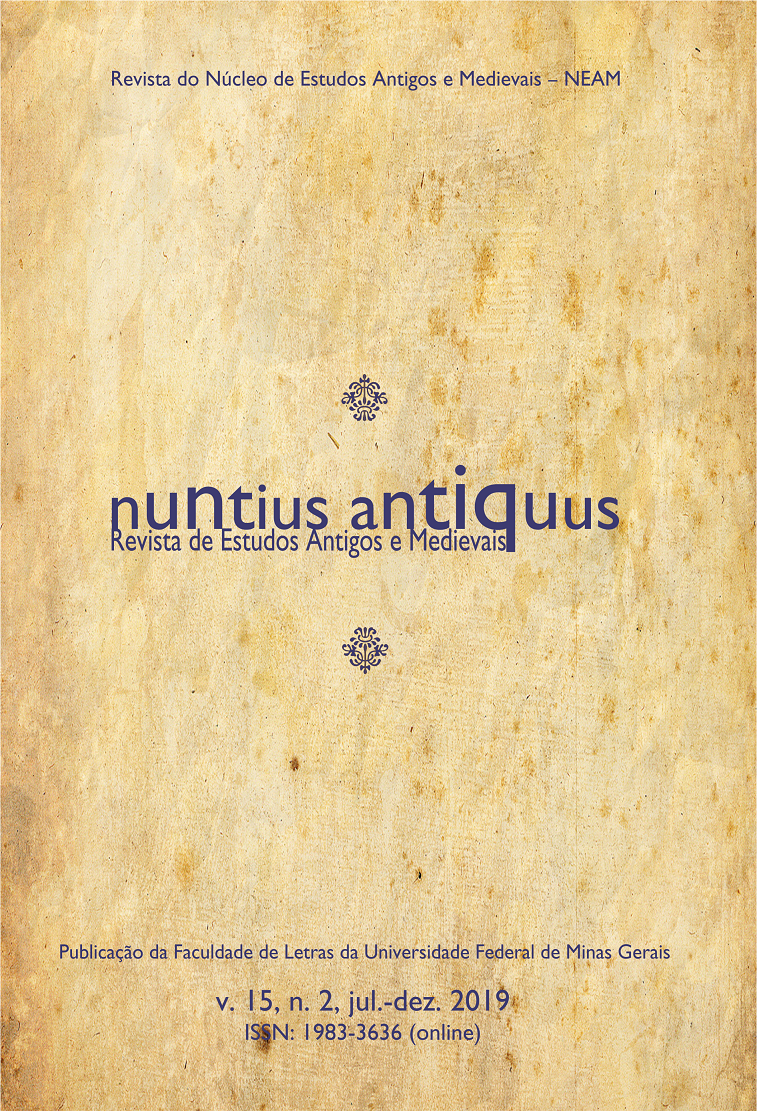From Rite to Stage: Gender Inversion and Performance in Aristophanes’ Thesmophoriazousae
Keywords:
Aristophanes, Thesmophoriazousae, gender, riteAbstract
The reversal of gender’s roles is staged in three of the eleven remaining comedies by Aristophanes. By “reversal of gender’s roles” we mean that women are represented performing functions conventionally performed by men in these plays. Thus, both the Lysistrata (411 BC) and the The Assemblywomen (392 BC) deal with the intrusion of the female figure in the public spaces of Athens –the Acropolis and the Agora, respectively –by prefiguring their participation in both the political and the economic life of the city. In the Thesmophoriazousae (411 BC), however, there is a repositioning concerning a battle of sexes and gender transvestitism, which encompasses the domain of aesthetics and visual, and this is projected in the theater itself. Instead of a collective confrontation between men and women, the play directs women’s actions against a single male target: the tragic poet Euripides. Saved from the social embarrassment and conventional patterns that keep them within the oíkos, silent and inert in public spaces of speech and action, on the stage of comedy women are represented as protagonists of their acts and manifestos. For this reason, the present study aims at analyzing the inversion of gender roles, transvestitism, and performance in the comedy Thesmophoriazousae. This study starts with the analysis of the readjustment of the performative postures which identify women in the Festival of the Thesmophoria, by focusing its argumentation in questions that revolve around the reversal role and gender transvestitism on the stage. Thus, in order to develop such discussion, this work is theoretically grounded on the studies of Zeitlin (1981), Tzanetou (2002), Vernant (1989), Silva (2015), and McClure (1999).
Downloads
References
ARISTÓFANES. Lisístrata. Tradução de Ana Maria César Pompeu. São Paulo: Hedra, 2010.
ARISTÓFANES. Tesmoforiantes. Tradução de Ana Maria César Pompeu. São Paulo: EDIPRO, 2015.
HESÍODO. Os Trabalhos e os Dias. Tradução de Mary de Camargo Neves Lafer. 3. ed. São Paulo: Iluminuras, 1996.
HESÍODO. Teogonia: a origem dos deuses. Tradução de Jaa Torrano. 3. ed. São Paulo: Iluminuras, 1995.
McCLURE, Laura. Gender and Verbal Genres. In: McCLURE, Laura. Spoken Like a Woman: Speech and Gender in Athenian Drama. Princeton: Princeton University Press, 1999. p. 32-69.
SILVA, Maria de Fátima Sousa e. A posição social da mulher na comédia de Aristófanes. Humanitas, Coimbra, n. 31/32, p. 97-114, 1979-1980.
TZANETOU, Angeliki. Something to do with Demeter: Ritual and performance in Aristophanes’ Women at the Thesmophoria. The American Journal of Philology, Baltimore, v. 123, n. 3, p. 329-367, 2002. DOI: https://doi.org/10.1353/ajp.2002.0045.
VERNANT, Jean-Pierre. As origens do pensamento grego. Tradução de Ísis da Fonseca. Rio de Janeiro: DIFEL, 2002.
VERNANT, Jean-Pierre. As origens do pensamento grego. Tradução de Ísis da Fonseca. São Paulo: Bertrand Brasil, 1989.
VERNANT, Jean-Pierre; VIDAL-NAQUET, Pierre. Mito e tragédia na Grécia Antiga. Tradução de Anna Lia de Amaral do Prado et alii. São Paulo: Duas Cidades, 1990.
ZEITLIN, Froma. Playing the Other: Theater, Theatricality, and the Feminine in Greek Drama. In: McCLURE, Laura. (ed.). Sexuality and Gender in the Classical World. Oxford: Blackwell, 2002. p. 103-143. DOI: https://doi.org/10.1002/9780470756188.ch4.
ZEITLIN, Froma. Travesties of Gender and Genre in Aristophanes’ Thesmophoriazousae. Critical Inquiry, Chicago, v. 8, n. 2, p. 301-327, 1981. DOI: https://doi.org/10.1086/448156.





